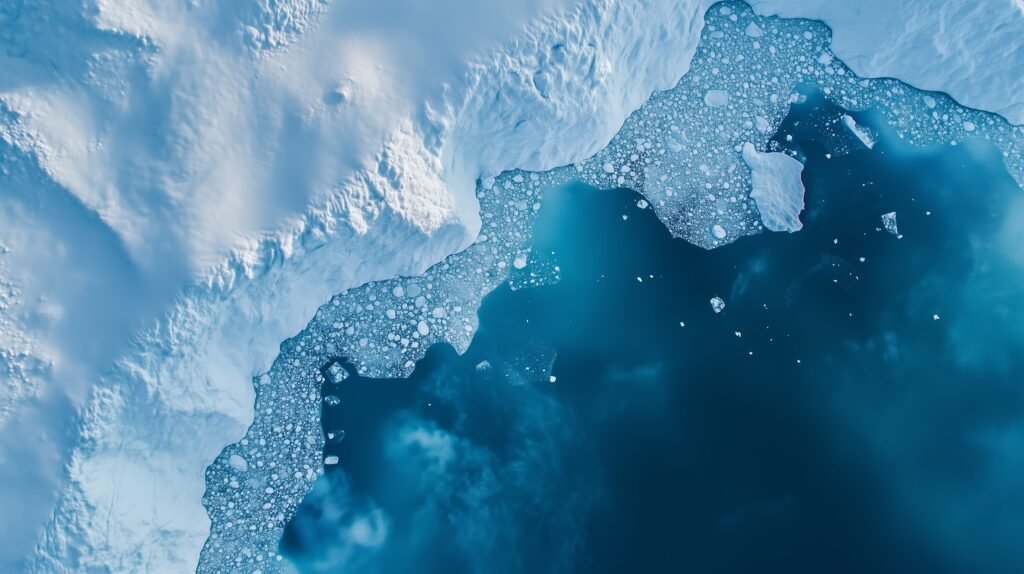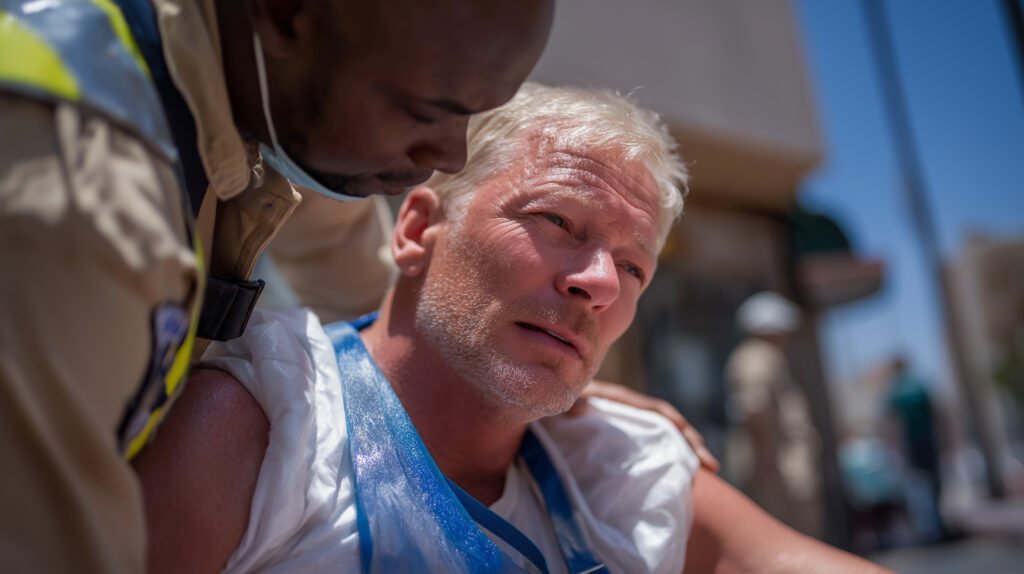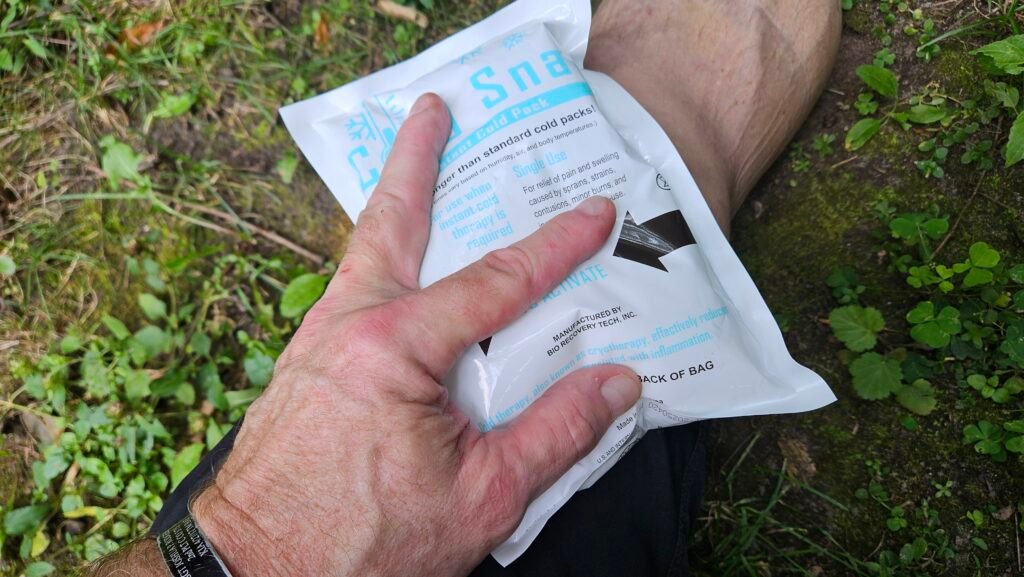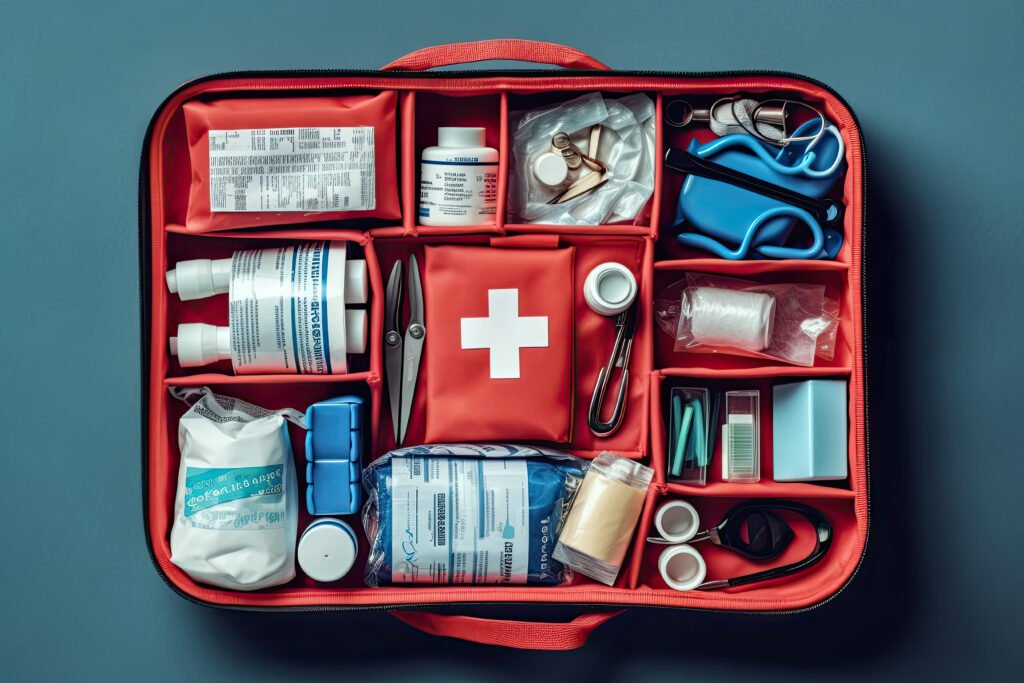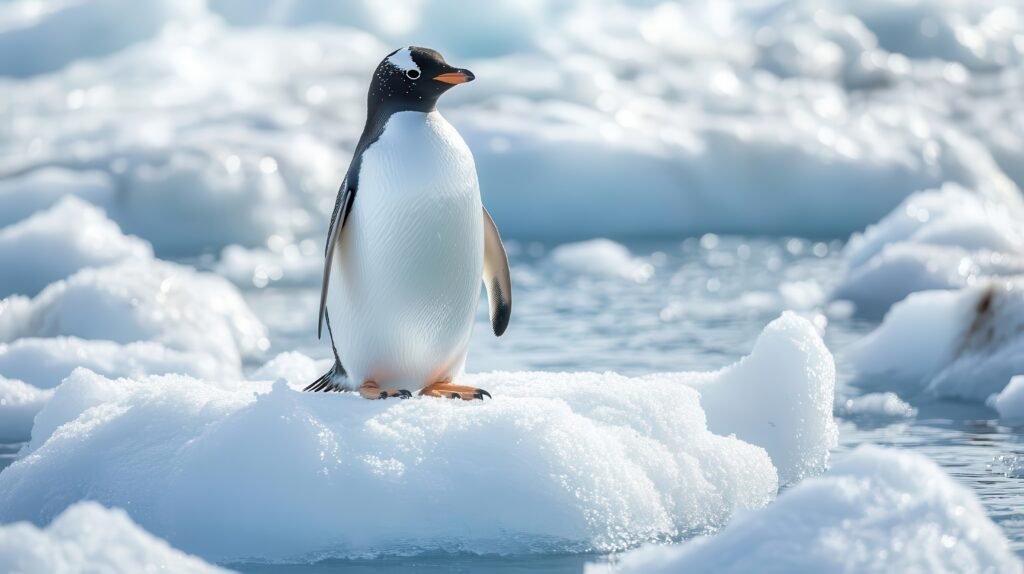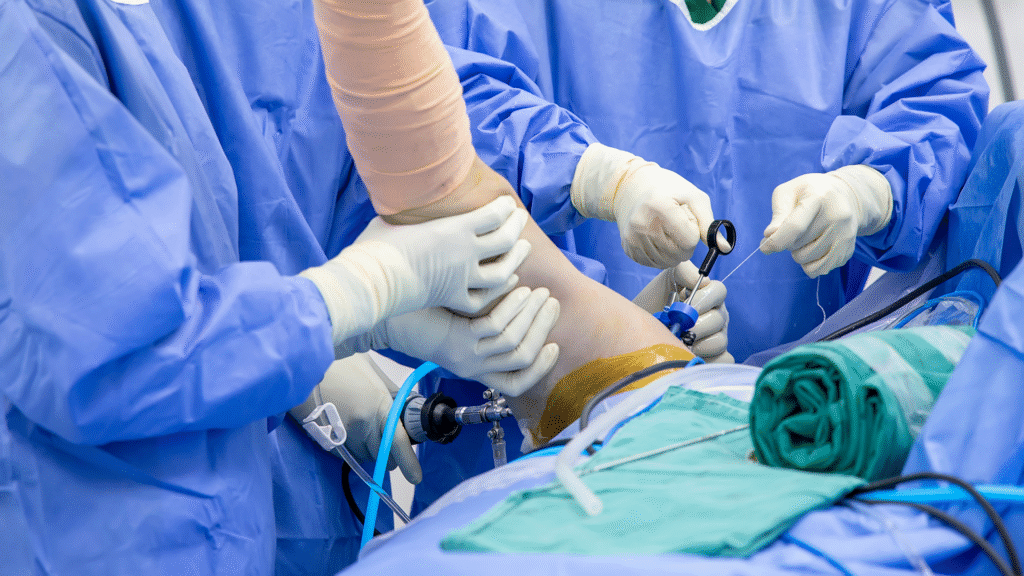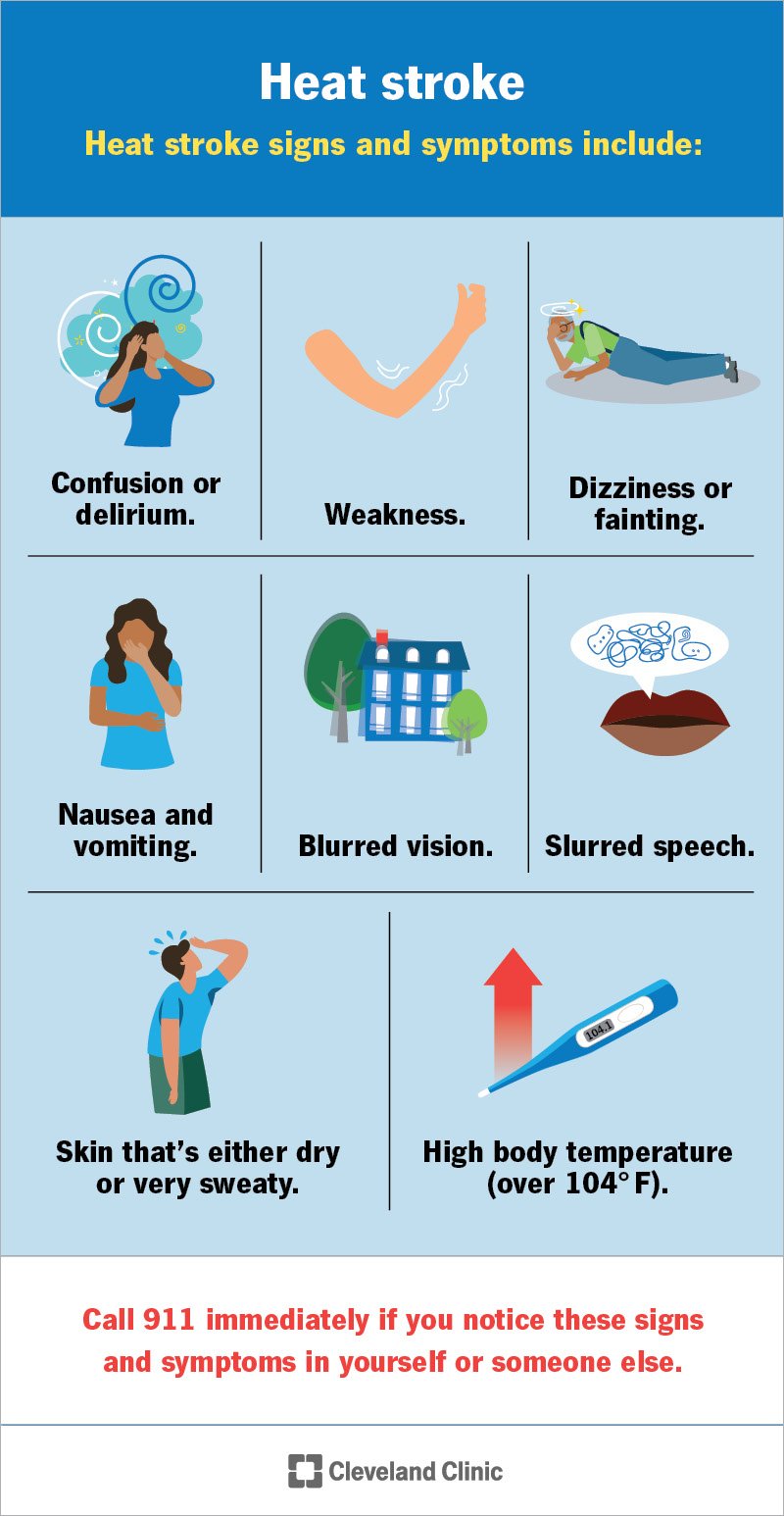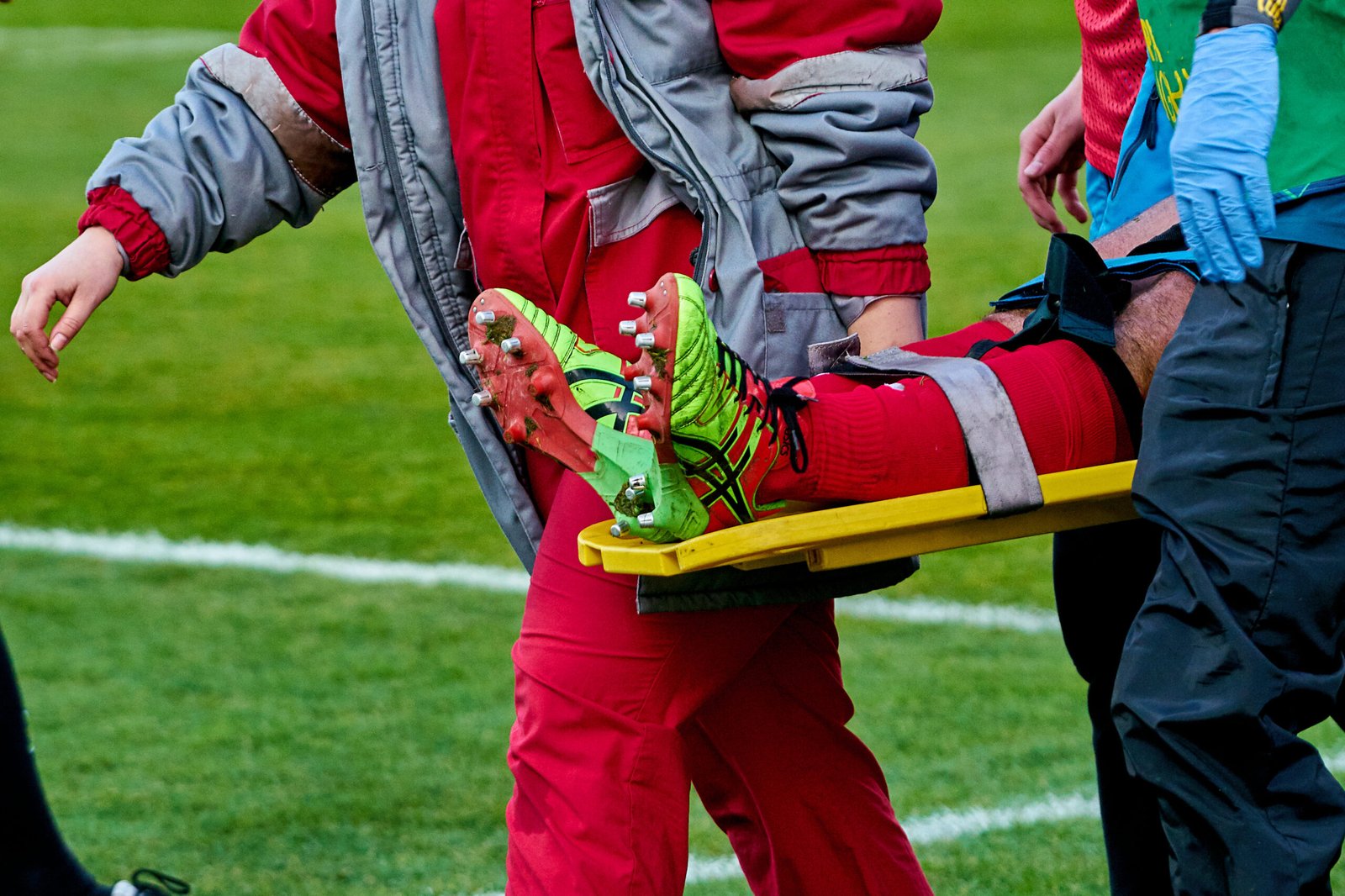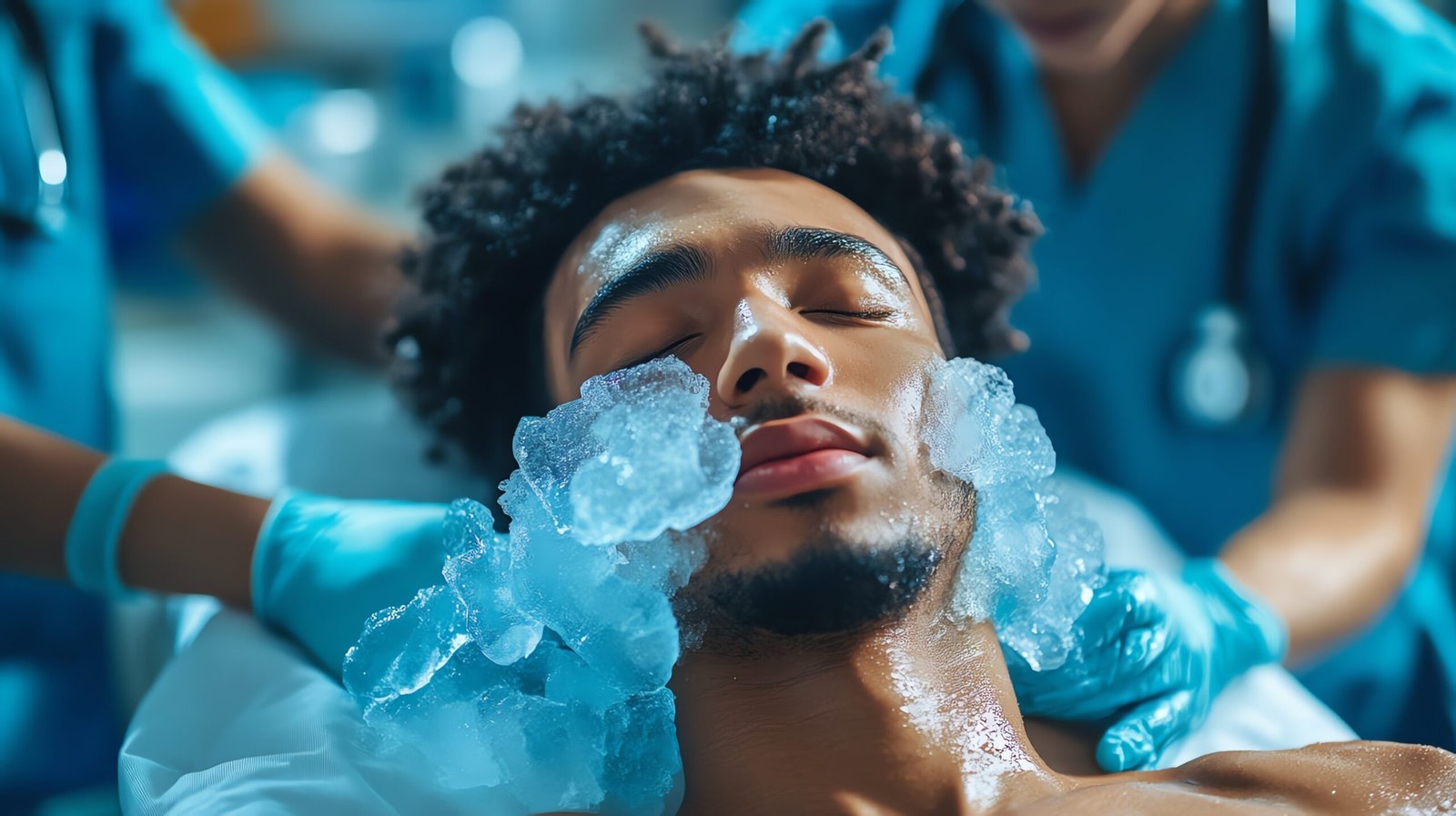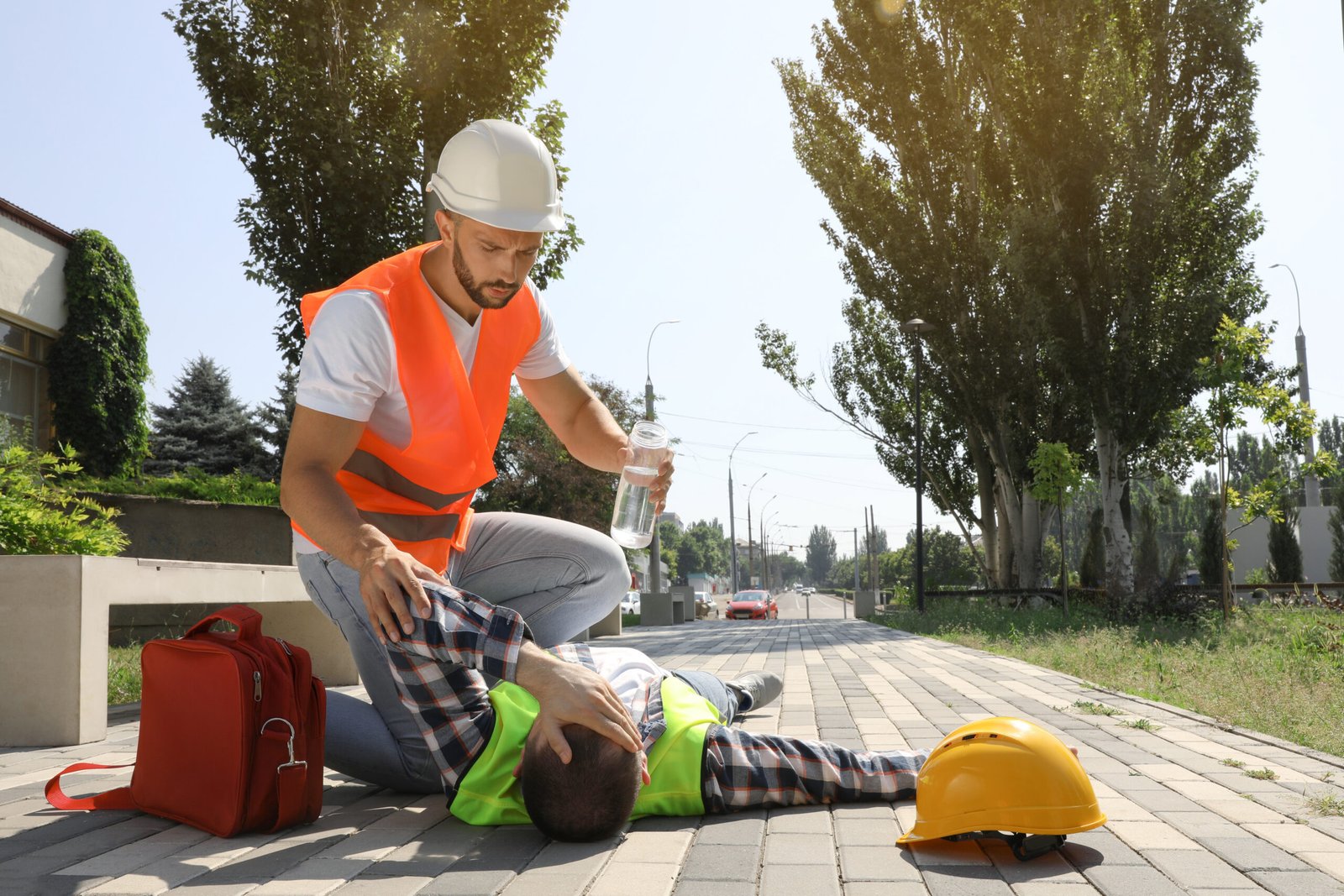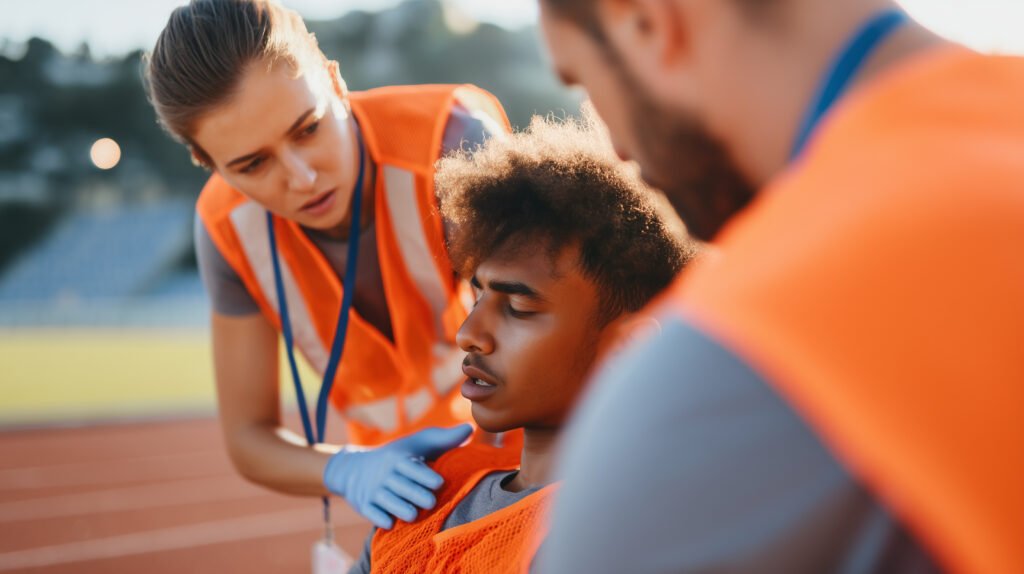
After calling 911…
Begin Reducing Body Temperature Immediately. Do not wait for emergency medical personnel.
- Move the person out of the sun or heat to a cooler spot (air-conditioned if possible).
- Remove any excess clothing or athletic equipment.
- Pour water over their skin and use anything available to fan them.
- Apply ice or cold packs to their armpits or neck.
- Soak a towel in ice water and apply it to the skin. Cover as much of their skin’s surface area as possible. Replace with newly soaked towels every minute or so.
The “Do Nots”
- Do not give the person fever-reducing medication, like acetaminophen. These medications don’t help heat stroke, which happens for different reasons than a fever. They may also worsen complications like organ damage.
- Don’t give them any fluids to drink. This might seem surprising. But a person experiencing heat stroke might accidentally inhale the liquid (aspiration), which can be dangerous.
- Overview
- Symptoms & Causes
- Risk Factors for Heat Stroke
- Complications
- Diagnosis and Tests
- Management & Treatment
- Outlook & Prognosis
Prevention
Acclimate. Do not walk onto a football field, baseball diamond, or soccer pitch from the air-conditioned comfort of the game room in your basement.
Download Heads Up Football and Hydration Guidelines from the link below.
Korey Stringer Institute’s Heat-up safely: the 2-week ramp
Goal: 7–14 days of gradually longer/easier-to-moderate sessions in the heat. Most heat adaptations arrive within a week and consolidate by ~2 weeks; they fade after ~1 week away from heat, so keep 2–3 heat exposures/week to maintain. Korey Stringer InstitutePubMedCDC
Week 1
- Days 1–2: 20–30 min easy in the heat (RPE ~4–5/10). Stop if symptoms escalate.
- Days 3–4: 35–45 min easy → steady (brief 1–2 min pickups only).
- Day 5: 45–60 min easy.
- Day 6: Optional cross-train/cooler session + 20–30 min easy heat exposure.
- Day 7: 45–60 min steady.
Week 2
- Day 8: 50–60 min steady; short reps at moderate effort with long, cool rests.
- Day 9: 30–40 min easy.
- Day 10: 60–75 min steady (or sport practice with built-in shade/water breaks).
- Day 11: Quality session in heat but reduce usual intensity/volume ~20–30% and extend recoveries.
- Days 12–14: Resume normal plan if you’ve had no red-flag symptoms; keep breaks, shade and water handy.
Pacing rule: Use effort/RPE or heart rate, not your cool-weather splits. Expect higher HR at a given pace until you acclimate. (ACSM/NATA consensus.) PubMedPMC
Hydration & sodium (simple and individualized)
- Before: Start hydrated; if urine is dark, sip fluids over the hours before training. (ACSM) PubMed
- During: Aim to limit body-mass loss to ≤2%. Practical start point is ~200–300 mL every 15 min, then adjust from your sweat rate. (NATA/KSI) PMCKorey Stringer Institute
- After: Replace ~125–150% of the fluid deficit over the next 2–4 h (include sodium). Example: if you lost 1 kg (~1 L), drink 1.25–1.5 L with electrolytes. (ACSM/NATA) PMCCiteSeerX
- Sodium: For long/hot sessions or “salty sweaters,” include ~20–50 mmol/L sodium (~460–1150 mg/L) via sports drink + salty foods. (NATA/ACSM) PMC
- Find your sweat rate: Weigh before/after (minimal clothing, towel off sweat). Each 1 lb (0.45 kg) lost ≈ 16 oz (475 mL). Re-check after you acclimate—sweat rate usually rises. (KSI) koreystringer-institute.media.uconn.edu



